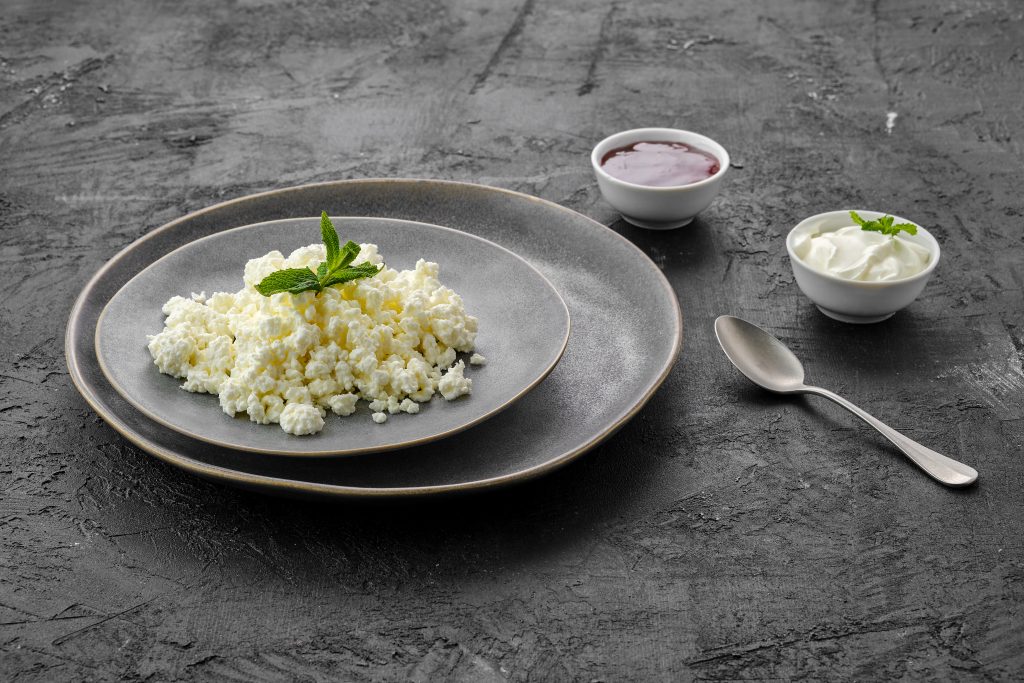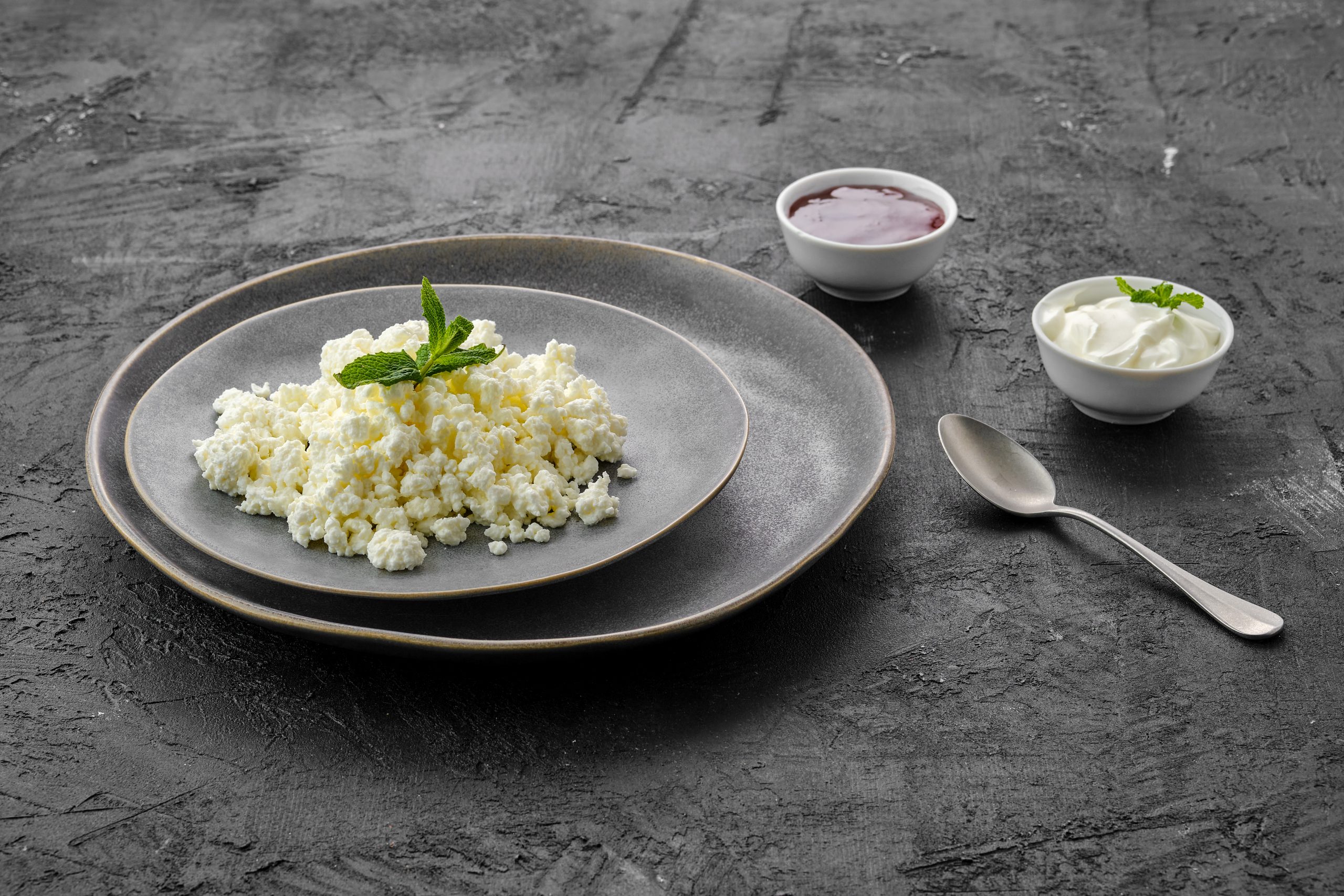Cottage Cheese Recipes
Cottage cheese has become a beloved staple in many kitchens due to its versatility and nutritional benefits. Whether you’re looking for a quick snack, a hearty meal, or a guilt-free dessert, cottage cheese can be a key ingredient in countless recipes. This article will explore a variety of savory and sweet cottage cheese recipes that are sure to delight your taste buds.
Table of Contents
The Growing Popularity of Cottage Cheese
Cottage cheese has become increasingly popular due to its high protein content, low calorie count, and versatility in cooking. It fits well with health trends like low-carb diets and clean eating. Social media has also played a role in its resurgence, with influencers and food bloggers sharing creative recipes. Overall, cottage cheese is now a favorite in many kitchens for its nutritional benefits and adaptability in various dishes.

The Nutritional Powerhouse: Cottage Cheese
Cottage cheese is not just delicious; it’s also packed with nutrients. High in protein and low in fat, this dairy product is an excellent choice for those looking to maintain a healthy diet. It’s also a good source of calcium, which is essential for bone health.
For those interested in the detailed health benefits of cottage cheese, you might find similar healthy dairy products on Nelda Recipes, which explores various nutritious food options.
Types and Varieties of Cottage Cheese
Cottage cheese comes in several types and varieties, each offering unique textures, flavors, and nutritional profiles. Understanding these differences can help you choose the best option for your dietary needs and culinary preferences.
1. Low-Fat vs. Full-Fat Cottage Cheese
- Low-Fat Cottage Cheese: This variety is popular among those who are watching their calorie and fat intake. It retains the creamy texture of cottage cheese but with reduced fat content, making it a lighter option for recipes and snacks.
- Full-Fat Cottage Cheese: For those who prefer a richer flavor and creamier consistency, full-fat cottage cheese is the way to go. It’s ideal for recipes where a more indulgent texture is desired.
2. Organic vs. Non-Organic Cottage Cheese
- Organic Cottage Cheese: Made from milk sourced from cows that are not treated with synthetic hormones or antibiotics, organic cottage cheese is often preferred by those looking for more natural, minimally processed options.
- Non-Organic Cottage Cheese: While more widely available, non-organic cottage cheese may contain additives or come from cows treated with hormones, which some people may prefer to avoid.
3. Lactose-Free Cottage Cheese
- This variety is specially made for individuals who are lactose intolerant. Lactose-free cottage cheese offers all the benefits of regular cottage cheese without causing digestive discomfort, making it a great option for those with lactose sensitivities.
4. Flavored Cottage Cheese
- Flavored cottage cheese comes pre-mixed with fruits, herbs, or spices, offering a convenient and tasty option for a quick snack. Popular flavors include pineapple, chive, and strawberry, providing both sweet and savory choices.
5. Small Curd vs. Large Curd Cottage Cheese
- Small Curd Cottage Cheese: This variety has a finer, more delicate texture, making it smooth and creamy. It’s often preferred for recipes that require a less chunky consistency.
- Large Curd Cottage Cheese: With bigger curds, this variety offers a more pronounced texture and is ideal for those who enjoy a chunkier feel in their cottage cheese.
Each type and variety of cottage cheese offers something unique, allowing you to select the best option based on your taste preferences and nutritional goals. Whether you’re looking for something low-fat, organic, or lactose-free, there’s a cottage cheese to suit every need.
Savory Cottage Cheese Recipes
Cottage Cheese and Avocado Salad
This creamy and nutritious salad combines cottage cheese with ripe avocados, cherry tomatoes, and a dash of lemon juice. It’s perfect for a light lunch or a side dish.
- Ingredients: Cottage cheese, avocado, cherry tomatoes, lemon juice, salt, and pepper.
- Instructions: Mix all ingredients in a bowl, season to taste, and enjoy!
Mediterranean Cottage Cheese Salad
A flavorful Mediterranean twist on a classic salad. This dish features cottage cheese, cucumbers, olives, feta, and a drizzle of olive oil.
- Ingredients: Cottage cheese, cucumber, olives, feta cheese, olive oil, oregano.
- Instructions: Toss all ingredients together, and serve chilled.
Cottage Cheese on Rye with Smoked Salmon
This savory and filling sandwich is perfect for breakfast or lunch. The rich flavor of smoked salmon pairs beautifully with the creamy texture of cottage cheese.
- Ingredients: Cottage cheese, smoked salmon, rye bread, dill, capers.
- Instructions: Spread cottage cheese on rye bread, top with smoked salmon, dill, and capers.
For more creative ways to use cottage cheese, check out this guide on Creative Ways to Use Cottage Cheese.
Sweet Cottage Cheese Recipes
Cottage Cheese Pancakes with Berries
These fluffy pancakes made with cottage cheese are a delightful breakfast treat, packed with protein and topped with fresh berries.
- Ingredients: Cottage cheese, eggs, flour, baking powder, berries, honey.
- Instructions: Mix cottage cheese, eggs, and flour into a batter, cook pancakes on a griddle, and serve with berries and honey.
Cottage Cheese and Honey Bowl
A simple yet delicious recipe, perfect for breakfast or dessert. The creamy cottage cheese is complemented by the natural sweetness of honey and the crunch of nuts.
- Ingredients: Cottage cheese, honey, walnuts, and cinnamon.
- Instructions: Mix all ingredients in a bowl, and enjoy!
Cottage Cheese Cheesecake
This light and creamy cheesecake is a healthier alternative to traditional cheesecakes. Made with cottage cheese, it’s lower in fat but still rich in flavor.
- Ingredients: Cottage cheese, eggs, sugar, vanilla extract, graham cracker crust.
- Instructions: Blend cottage cheese, eggs, sugar, and vanilla, pour into crust, bake until set.
You can explore similar dessert ideas on Nelda Recipes, where you’ll find creative ways to indulge without the guilt.

Cottage Cheese in Baked Goods
Cottage Cheese Banana Bread
Banana bread gets a protein boost with the addition of cottage cheese. This moist and delicious bread is perfect for breakfast or a snack.
- Ingredients: Cottage cheese, bananas, flour, sugar, eggs, baking soda.
- Instructions: Mash bananas, mix with cottage cheese and other ingredients, bake until golden brown.
Cottage Cheese Blueberry Muffins
These tender and juicy muffins are packed with blueberries and have a subtle tang from the cottage cheese. They’re a perfect on-the-go breakfast option.
- Ingredients: Cottage cheese, flour, sugar, eggs, blueberries, baking powder.
- Instructions: Mix all ingredients, fold in blueberries, and bake until muffins are golden.
Creative and Unusual Uses of Cottage Cheese
Protein-Packed Cottage Cheese Smoothie
This smoothie is a nutritious and filling option for breakfast or post-workout recovery. Cottage cheese adds creaminess and a protein punch.
- Ingredients: Cottage cheese, banana, spinach, almond milk, honey.
- Instructions: Blend all ingredients until smooth, and serve chilled.
Creamy Cottage Cheese Alfredo Sauce
A healthier twist on classic Alfredo sauce, this version uses cottage cheese to achieve a creamy texture without the heavy cream.
- Ingredients: Cottage cheese, garlic, Parmesan cheese, butter, pasta.
- Instructions: Blend cottage cheese with garlic and Parmesan, melt butter in a pan, add the blended mixture, and toss with pasta.
Cottage Cheese in Different Cuisines
Italian: Cottage Cheese Cannoli Filling
A light and airy cannoli filling made with cottage cheese instead of ricotta. This is a lower-fat option that doesn’t compromise on taste.
- Ingredients: Cottage cheese, powdered sugar, vanilla extract, chocolate chips.
- Instructions: Mix all ingredients, pipe into cannoli shells, and serve.
Indian: Cottage Cheese Raita
Raita is a refreshing yogurt-based side dish that complements spicy Indian food. Adding cottage cheese gives it a thicker texture and extra protein.
- Ingredients: Cottage cheese, yogurt, cucumber, mint, cumin.
- Instructions: Mix all ingredients, season with cumin and salt, and serve chilled.
Mexican: Cottage Cheese Tacos
These tacos are a creative and healthy twist on traditional tacos. Cottage cheese adds creaminess without the need for sour cream.
- Ingredients: Cottage cheese, tortillas, black beans, salsa, avocado.
- Instructions: Fill tortillas with cottage cheese, beans, and salsa, and top with avocado.
How to Make Cottage Cheese at Home
How to Make Cottage Cheese at Home
Making cottage cheese at home is a simple process that requires just a few ingredients and some patience. Homemade cottage cheese offers a fresh, creamy taste that can be tailored to your preference in texture and flavor. Here’s a step-by-step guide to making your own cottage cheese.
Ingredients and Equipment Needed
- Ingredients:
- 1 gallon of whole milk (preferably fresh and non-homogenized)
- 1/4 cup white vinegar or lemon juice (to acidify the milk)
- 1/2 teaspoon salt (optional, for flavor)
- 1/4 cup heavy cream (optional, for a creamier texture)
- Equipment:
- A large, heavy-bottomed pot
- A thermometer (to monitor milk temperature)
- A long spoon or spatula
- A cheesecloth or clean kitchen towel
- A colander
- A large bowl
Step-by-Step Process
- Heat the Milk:
- Pour the gallon of milk into the large pot and place it over medium heat.
- Gradually heat the milk to 190°F (88°C), stirring occasionally to prevent scorching. Use the thermometer to monitor the temperature closely.
- Acidify the Milk:
- Once the milk reaches 190°F, remove the pot from the heat.
- Slowly add the vinegar or lemon juice while gently stirring the milk. You’ll notice the milk beginning to curdle almost immediately. The curds (solid parts) will separate from the whey (liquid).
- Let the Curds Form:
- Cover the pot and let it sit undisturbed for about 30 minutes. This allows the curds to fully form.
- Drain the Curds:
- Line a colander with cheesecloth or a clean kitchen towel and place it over a large bowl to catch the whey.
- Carefully pour the curds and whey into the colander. The curds will be caught in the cloth, while the whey will drain into the bowl.
- Let the curds drain for about 5 minutes, or longer if you prefer drier cottage cheese.
- Rinse the Curds:
- Gather the cheesecloth around the curds and rinse them under cold water. This helps cool the curds and removes any remaining whey.
- Gently squeeze the cloth to remove excess water, being careful not to squeeze too hard and break up the curds.
- Season the Cottage Cheese:
- Transfer the curds to a mixing bowl. Add salt to taste, and if you prefer a creamier cottage cheese, stir in the heavy cream.
- Mix gently until the salt and cream are evenly distributed.
- Store and Serve:
- Your homemade cottage cheese is now ready to eat! Store it in an airtight container in the refrigerator. It will keep for up to a week.
- Enjoy your cottage cheese on its own, with fruits, or as an ingredient in your favorite recipes.
Tips for Perfect Homemade Cottage Cheese
- Use Fresh Milk: The fresher the milk, the better the cottage cheese. If possible, use milk that has not been ultra-pasteurized, as it will curdle more effectively.
- Adjust the Texture: If you prefer a drier cottage cheese, let the curds drain longer. For a creamier texture, add more cream after draining.
- Experiment with Flavors: You can add herbs, spices, or even fruit to your cottage cheese to create custom flavors.
Storing and Preserving Homemade Cottage Cheese
- Store your cottage cheese in the refrigerator in an airtight container. It will stay fresh for about a week.
- If you find the texture too dry after a few days, you can refresh it by stirring in a bit of milk or cream before serving.
Flavoring Homemade Cottage Cheese
- For a savory twist, try adding chopped chives, garlic, or dill to your cottage cheese.
- For a sweet option, mix in honey, fresh berries, or a pinch of cinnamon.
Making cottage cheese at home is a rewarding process that allows you to enjoy a fresh, customizable product. With just a few simple steps, you can create a delicious, nutritious cheese that can be enjoyed in a variety of ways.
Make your own cottage cheese
Making your own cottage cheese at home is a relatively simple process. Here’s how you can do it:
Ingredients:
- 1 gallon of whole milk (you can also use 2% or skim milk, but whole milk yields the best texture)
- ½ cup of white vinegar or lemon juice
- 1 teaspoon of salt (optional)
- ¼ cup of heavy cream (optional, for a creamier texture)
Equipment:
- Large pot
- Wooden spoon or spatula
- Thermometer
- Cheesecloth or a clean dish towel
- Colander
- Large bowl
Instructions:
- Heat the Milk:
- Pour the milk into a large pot and slowly heat it over medium heat. Use a thermometer to monitor the temperature. You want to heat the milk to about 185°F (85°C), stirring occasionally to prevent scorching.
- Add Acid:
- Once the milk reaches the desired temperature, remove the pot from heat. Stir in the white vinegar or lemon juice gradually. The milk will begin to curdle as the acid separates the curds (solid) from the whey (liquid).
- Let it Sit:
- Cover the pot with a clean towel or lid and let it sit undisturbed for about 30 minutes. This resting period allows the curds to fully form.
- Drain the Curds:
- Place a colander lined with cheesecloth over a large bowl. Carefully pour the curds and whey into the colander to drain. Let the curds drain for about 5-10 minutes.
- Rinse the Curds:
- Gather the cheesecloth around the curds and rinse them under cold running water. Gently squeeze and knead the curds to remove any excess whey and to cool them down.
- Season and Add Cream (Optional):
- Transfer the curds to a mixing bowl. If you like, you can add salt to taste and mix in some heavy cream for a creamier consistency. Adjust the amount of cream based on how creamy you want your cottage cheese.
- Store and Serve:
- Store your homemade cottage cheese in an airtight container in the refrigerator. It’s best when eaten fresh but can be kept for up to a week.
Enjoy your homemade cottage cheese with fruit, on toast, in salads, or as a side dish!
FAQs About Cottage Cheese
What Do You Do with Cottage Cheese?
Cottage cheese is incredibly versatile. You can use it in both savory and sweet dishes. It can be added to salads, used as a topping for toast, blended into smoothies, or even incorporated into baked goods like muffins and pancakes. You can also enjoy it as a snack with fruits or vegetables.
What Is the Most Popular Way to Eat Cottage Cheese?
The most popular way to eat cottage cheese is simple: with a sprinkle of salt and pepper or paired with fresh fruit. Many people enjoy it as a high-protein snack, either on its own or mixed with ingredients like honey, berries, or nuts for added flavor and nutrition.
Is Cottage Cheese Healthy or Fattening?
Cottage cheese is generally considered healthy. It is high in protein and low in fat, especially if you opt for low-fat or fat-free versions. It is also rich in calcium, making it a great choice for those looking to maintain a balanced diet. However, full-fat versions do contain more calories, so portion control is key if you’re watching your calorie intake.
Is Cottage Cheese Healthier Than Yogurt?
Both cottage cheese and yogurt have their health benefits, and which is healthier can depend on your dietary needs. Cottage cheese typically has more protein per serving, which is great for muscle repair and keeping you full longer. Yogurt, especially Greek yogurt, is rich in probiotics, which are beneficial for gut health. Both can be part of a healthy diet, so it often comes down to personal preference and nutritional goals.
What Is the Best Way to Eat Cottage Cheese?
Cottage cheese is extremely versatile. It can be eaten on its own, mixed with fruits or veggies, or used as a base for dips and spreads.
Can I Cook with Cottage Cheese?
Yes, cottage cheese can be used in a variety of cooked dishes, from casseroles to baked goods, and even in sauces like Alfredo.
Is Cottage Cheese Good for Weight Loss?
Cottage cheese is low in calories and high in protein, making it an excellent choice for weight loss.
How Long Does Cottage Cheese Last in the Fridge?
Unopened, cottage cheese can last up to 2 weeks in the fridge. Once opened, it’s best to consume it within a week.
Can You Freeze Cottage Cheese?
Yes, but freezing may change the texture. It’s best used in cooked dishes after freezing.
Conclusion
Cottage cheese is a versatile ingredient that can be used in both sweet and savory dishes. Whether you’re looking to whip up a quick breakfast, a hearty lunch, or a satisfying dessert, cottage cheese recipes offer endless possibilities. So next time you’re at the grocery store, be sure to pick up some cottage cheese and start experimenting in the kitchen!
For those interested in learning how to make cottage cheese at home, check out this guide on How to Make Cottage Cheese.

